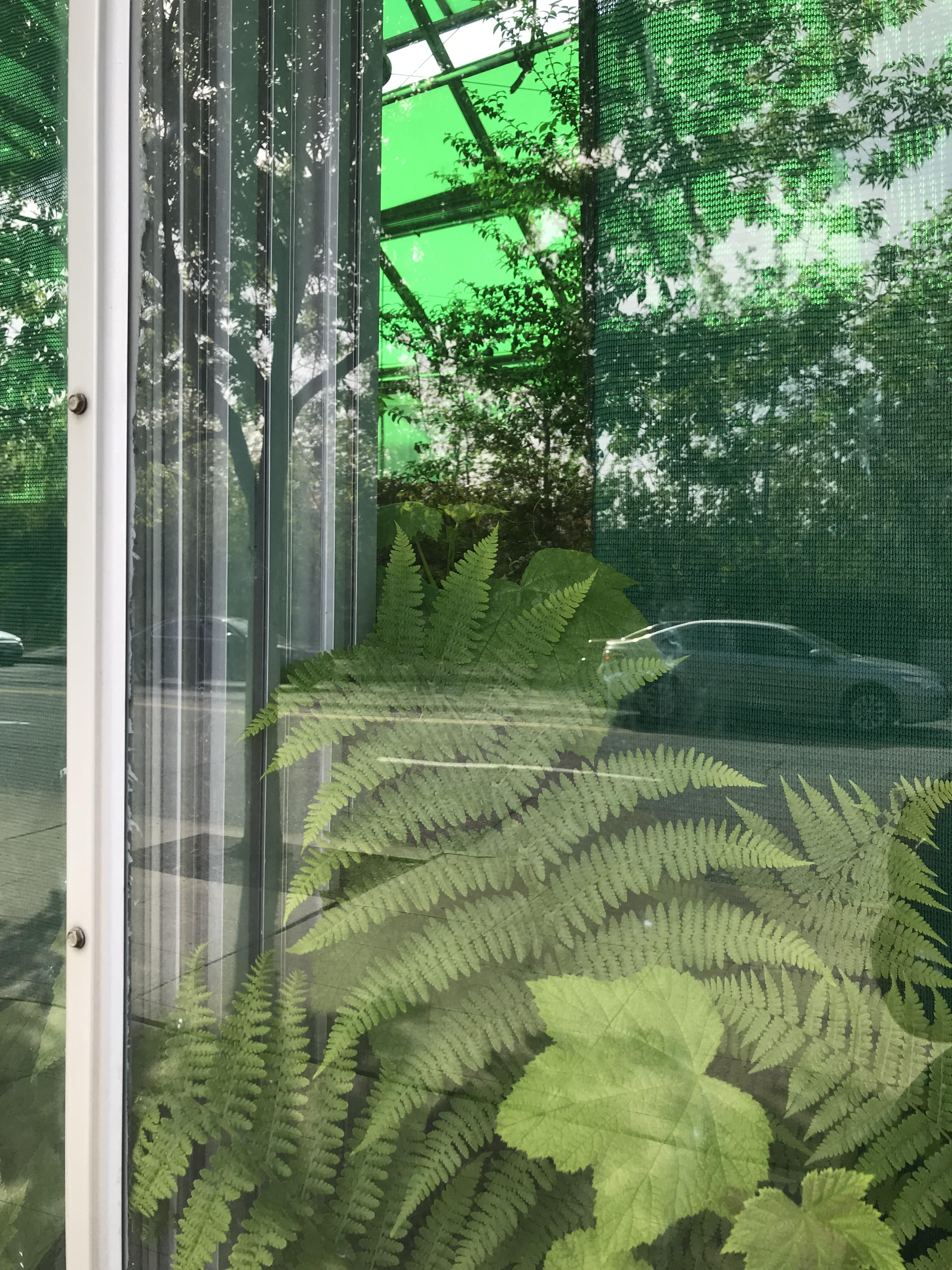
In the northwest corner of the Olympic Sculpture Park in Seattle stands a greenhouse that contains a mixed media installation by artist Mark Dion.
The work, entitled Neukom Vivarium, features a Western Hemlock that fell outside of Seattle in a protected old growth forest in 1996. The 60-foot hemlock has since become a “nurse log”—a log that decays, providing nutrients and protection for new life to emerge. This work supports a variety of bacteria, fungi, insects, lichen and plants. Visitors are provided magnifying glasses so they can examine the dynamic, lush ecosystem that Dion refers to now as an “art system.”
The installation is delightful, informative, beautiful and connects art with science. The log sits in a raised bed of specially prepared soil about 30” off the ground—positioning all the action at eye level. The structure, designed by Owen Richards Architects, features elaborate systems to maintain the appropriate temperature, air quality, moisture and soil composition.
All this is an attempt to have the natural processes continues as they would in the wilderness. The piece is described as a combination of sculpture, architecture, environmental education and horticulture.
Although the work displays an abundance of life and regeneration, it is by no means intended to be an optimistic statement. Ironically, placing this natural process within a dense urban environment requires incredibly complex, expensive life support systems. Dion describes the piece as a “coffin” that attempts to mimic what nature does effortlessly. He continues: “So, this piece is in some way perverse. It shows that, despite all of our technology and money, when we destroy a natural system, it is virtually impossible to get it back. In a sense, we’re building a failure.”

David, thank you for sharing this haunting image and description. It will provide grist for my thoughts today.